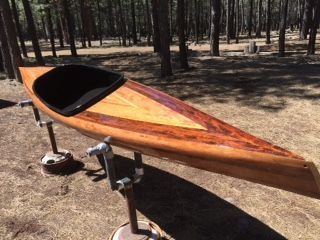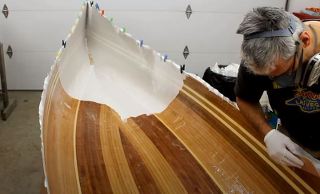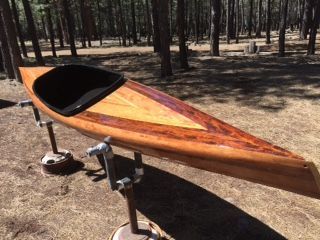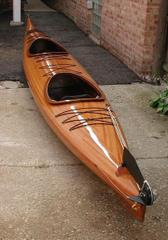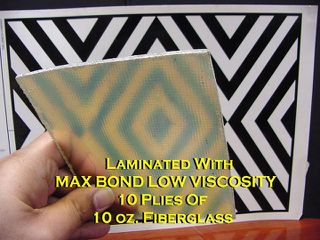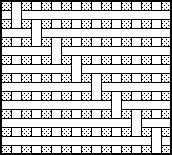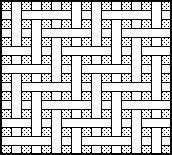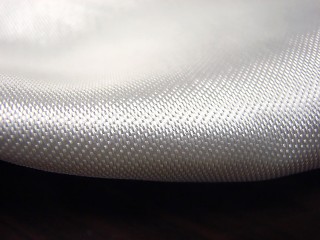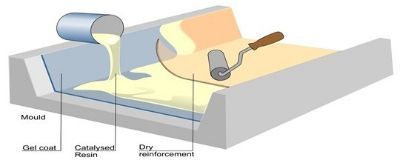Style 7781
60 Inches Wide (5 Feet)
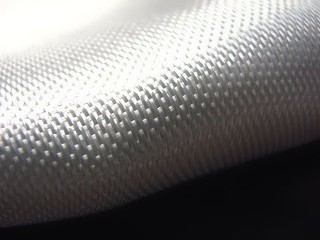

9-Oz Fiberglass 8 Harness Satin Weave Style 7781 | 2 Yards | |
9-Oz Fiberglass 8 Harness Satin Weave Style 7781 | 5 Yards | |
9-Oz Fiberglass 8 Harness Satin Weave Style 7781 | 10 Yards |
|
Fabric Engineering Data |
|
|
Style |
7781 |
|
Finish |
Volan |
|
Fiber Type |
Glass |
|
Weave Pattern |
8 Harness Satin |
|
Density |
1.9 Grams/CC |
|
Warp Yarn |
ECDE 75 1/0 |
|
Fill Yarn |
ECDE 75 1/0 |
|
Breaking Strength |
|
|
Warp (lbs/inch) |
570 |
|
Fill (lbs/inch) |
450 |
|
Count: Ends x Picks (per inch) |
Warp: 57, Fill: 54 |
|
Weight |
8.95 (OSY) |
|
Thickness (inch) |
0.009 |
Use This Fabric With Our MAX CLR-HP A/B Resin System
Excellent For Kayak And Canoe Fiberglassing
https://www.ebay.com/itm/312049343568
Note The Pliability Of The Fabric As It Is Used As A 90° Angle Corner
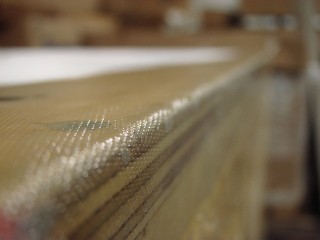
MAX CLR RESIN SYSTEM
For Fabricating High Strength Fiberglass Parts
MAX CLR COMES IN SEVERAL KIT SIZES
MAX CLR A/B 24-Ounce Kit https://www.ebay.com/itm/222623963194
MAX CLR A/B 48-Ounce Kit https://www.ebay.com/itm/311947320101
MAX CLR A/B 96-Ounce Kit https://www.ebay.com/itm/222625329068
MAX CLR A/B 96-Ounce Kit https://www.ebay.com/itm/222625338230
MAX CLR A/B 1.5-Gallon Kit https://www.ebay.com/itm/222626972426
BASIC PRINCIPLES OF FIBERGLASS LAYUP
********************************************************
GUIDELINES COMPOSITE FABRICATION
By simple definition, a composite
material is a manufactured collection of two or more ingredients combined to form a new material;
that is defined by its performance that should
uniquely greater than the sum of its individual parts. This method is also defined as a SYNERGISTIC COMPOSITION. Note The Uniformity Between The Impregnating Resin And Fiberglass Fabric Producing A Transparent Laminate (No Air Voids Or Porosity)
Step One: Fabric Selection Types Of Fabric Weave Style And Fabric Finishing For Resin Type Compatibility Fabrics are generally considered ”balanced” if the breaking strength is within 15% warp to fill and are best in bias applications on lightweight structures. “Unbalanced” fabrics are excellent when a greater load is required one direction and a lesser load in the perpendicular direction.
AVAILABLE FABRICS
LENGTH
CLICK THE LINK TO VIEW & ADD
TO CART
1.5-Oz Fiberglass Plain Weave
Style 120
5 Yards
1.5-Oz Fiberglass Plain Weave
Style 120
10 Yards
7-Oz Fiberglass Plain Weave
Style 7532
5 Yards
10-Oz Fiberglass Plain Weave
Style 7500
3 Yards
10-Oz Fiberglass Plain Weave
Style 7500
5 Yards
10-Oz Fiberglass Plain Weave
Style 7500
10 Yards
9-Oz Fiberglass 8 Harness Satin
Weave Style 7781
2 Yards
9-Oz Fiberglass 8 Harness Satin
Weave Style 7781
5 Yards
9-Oz Fiberglass 8 Harness Satin
Weave Style 7781
10 Yards
26-Oz Fiberglass 8 Harness Satin
Weave Style 1584
3 Yards
5-Oz Kevlar 49 Fabric 8 Harness
Satin Style 351
3 Yards
6-Oz Carbon Fiber 3K Plain Weave
With Tracers
3 Yards
Fabric Nomenclature & Specifications - Thread Count: The number of threads (tow in carbon and yarn in Aramid) per inch.
- The first number will be the warp count and the second will be the fill count.
- Fill: The threads that run the width of the roll or bolt and perpendicular to the warp threads.
- Warp: The threads that run the length of the roll or bolt and perpendicular to the fill threads.
- Thickness: Measured in fractions of an inch. The thicker the fabric the more resin required to fill the weave to obtain a surface-smooth finished part.
Finishing & TreatmentFabrics made from glass filament used for composites are chemical treatment to make it compatible with resin systems, therefore improving the bond between the fiber and the resin. Finishing fiberglass typically decreases the fiber strength by as much as 50%. Both Silane and Volan finishes are epoxy compatible.
Weaves Types SATIN WEAVE TYPE CONFORMITY ONTO CURVED SHAPES
Plain Weaves, Bi-axial, Unidirectional Styles For Directional High Strength Parts Use this weave style cloth when high strength parts are desired. It is ideal for reinforcement, mold making, aircraft and auto parts tooling, marine, and other composite lightweight applications.
that is defined by its performance that should uniquely greater than the sum of its individual parts.
Note The Uniformity Between The Impregnating Resin And Fiberglass Fabric Producing A Transparent Laminate (No Air Voids Or Porosity)
|
AVAILABLE FABRICS |
LENGTH |
CLICK THE LINK TO VIEW & ADD
TO CART |
|
1.5-Oz Fiberglass Plain Weave
Style 120 |
5 Yards |
|
|
1.5-Oz Fiberglass Plain Weave
Style 120 |
10 Yards |
|
|
7-Oz Fiberglass Plain Weave
Style 7532 |
5 Yards |
|
|
10-Oz Fiberglass Plain Weave
Style 7500 |
3 Yards |
|
|
10-Oz Fiberglass Plain Weave
Style 7500 |
5 Yards |
|
|
10-Oz Fiberglass Plain Weave
Style 7500 |
10 Yards |
|
|
9-Oz Fiberglass 8 Harness Satin
Weave Style 7781 |
2 Yards |
|
|
9-Oz Fiberglass 8 Harness Satin
Weave Style 7781 |
5 Yards |
|
|
9-Oz Fiberglass 8 Harness Satin
Weave Style 7781 |
10 Yards |
|
|
26-Oz Fiberglass 8 Harness Satin
Weave Style 1584 |
3 Yards |
|
|
5-Oz Kevlar 49 Fabric 8 Harness
Satin Style 351 |
3 Yards |
|
|
6-Oz Carbon Fiber 3K Plain Weave
With Tracers |
3 Yards |
- Thread Count: The number of threads (tow in carbon and yarn in Aramid) per inch.
- The first number will be the warp count and the second will be the fill count.
- Fill: The threads that run the width of the roll or bolt and perpendicular to the warp threads.
- Warp: The threads that run the length of the roll or bolt and perpendicular to the fill threads.
- Thickness: Measured in fractions of an inch. The thicker the fabric the more resin required to fill the weave to obtain a surface-smooth finished part.
Weaves Types
Step Two:
Choose The Best Epoxy Resin System For The Application The epoxy resin used in fabricating a laminate will dictate how the FRP will perform when load or pressure is implied on the part. To choose the proper resin system, consider the following factors that is crucial to a laminate's performance.
Size And Configuration Of The Part (Number Of Plies And Contoured, Flat Or Profiled) Consolidating Force (Free Standing Dry Or Hand Lay-up, Vacuum Bag Or Platen Press Curing) Curing Capabilities (Heat Cured Or Room Temperature Cured) Mechanical Load Parameters (Shearing Force, Torsional And Directional Load, Beam Strength)
Environmental Exposure The Principal Role Of The Resin Is To Bind The Fabric Into A Homogeneous Rigid Substrate (Operating Temperature, Ambient Conditions, Chemical Exposure, Cyclic Force Loading) Material And Production Cost (Buying In Bulk Will Always Provide The Best Overall Costs) These factors will dictate the design and the composition of the part and must be carefully considered during the design and engineering phase of the fabrication.
Top Selling Impregnating Resin System MAX BOND LOW VISCOSITY A/B
Marine Grade Boat Building
MAX BOND LOW VISCOSITY 32-Ounce
MAX BOND LOW VISCOSITY 64-Ounce
MAX BOND LOW VISCOSITY 1-Gallon
MAX BOND LOW VISCOSITY 2-Gallon
MAX BOND LOW VISCOSITY 10-Gallon
MAX 1618 A/B
Crystal Clear, High Strength, Lowest Viscosity, Durability & Toughness, Excellent Woodworking Resin
MAX 1618 A/B 48-Ounce Kit
MAX 1618 A/B 3/4-Gallon Kit
MAX 1618 A/B 3/4-Gallon Kit
MAX 1618 A/B 1.5-Gallon Kit
MAX CLR A/B
Water Clear Transparency, Chemical Resistance, High Impact Resistance, Low Viscosity
MAX CLR A/B 24-Ounce Kit
MAX CLR A/B 48-Ounce Kit
MAX CLR A/B 96-Ounce Kit
MAX CLR A/B 96-Ounce Kit
MAX CLR A/B 1.5-Gallon Kit
MAX GRE A/B
Gasoline Resistant Epoxy Resin
Resistant To Gasoline/E85 Blend, Acids & Bases, Sealing, Coating, Impregnating Resin
MAX GRE A/B 48-Ounce Kit
MAX GRE A/B 96-Ounce Kit
MAX HTE A/B
High-temperature Epoxy
Heat Cured Resin System For Temperature Resistant Bonding, Electronic Potting, Coating, Bonding
MAX HTE A/B 80-Ounce Kit
MAX HTE A/B 40-Ounce Kit
Step Three:Proper Lay-Up Technique -Putting It All Together
Pre-lay-up notes
- Lay out the fabric and pre-cut to size and set aside
- Avoid distorting the weave pattern as much as possible
- For fiberglass molding, ensure the mold is clean and adequate mold release is used
- View our video presentation above "MAX EPOXY RESIN MIXING TECHNIQUE"
- Mix the resin only when all needed materials and implements needed are ready and within reach
Mix the proper amount of resin needed and be accurate proportioning the resin and curing agent. Adding more curing agent than the recommended mix ratio will not promote a faster cure. Over saturation or starving the fiberglass or any composite fabric will yield poor mechanical performance. When mechanical load or pressure is applied to the composite laminate, the physical strength of the fabric should bear the stress and not the resin. If the laminate is over saturated with the resin it will most likely to fracture or shatter instead of rebounding and resist damage.
Don’t how much resin to use to go with the fiberglass?
A good rule of thumb is to maintain a minimum of 30 to 35% resin content by weight.
This is the optimum ratio used in high-performance prepreg (or pre-impregnated fabrics) typically used in aerospace and high-performance structural application.
For general hand lay-ups, calculate using 60% fabric weight to 40% resin weight as a safety factor.
This will ensure that the fabricated laminate will be below 40% resin content depending on the waste factor accrued during fabrication.
Place the entire pre-cut fiberglass to be used on a digital scale to determine the fabric to resin weight ratio. Measuring by weight will ensure accurate composite fabrication and repeatability, rather than using OSY (ounces per square yard) or GSM ( grams per meter square) data.
THE USE OF A WEIGHING SCALE IS HIGHLY RECOMMENDED
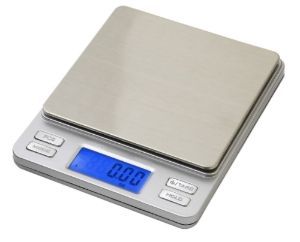
Purchase this scale with any of our product offering and the shipping cost of the scale is free.
https://www.ebay.com/itm/222630300203
A good rule of thumb is to maintain a minimum of 30 to 35% resin content by weight, this is the optimum ratio used in high-performance prepreg (or pre-impregnated fabrics) typically used in aerospace and high-performance structural application. For general hand lay-ups, calculate using 60% fabric weight to 40% resin weight as a safety factor. This will ensure that the fabricated laminate will be below 40% resin content depending on the waste factor accrued during fabrication.
Place the entire pre-cut fiberglass to be used on a digital scale to determine the fabric to resin weight ratio. Measuring by weight will ensure accurate composite fabrication and repeatability, rather than using OSY data.
Typical fabric weight regardless of weave pattern
1 ounce per square yard is equal to 28.35 grams
1 square yard equals to 1296 square inches (36 inches x 36 inches)
FOR EXAMPLE
1 yard of 8-ounces per square yard (OSY) fabric weighs 226 grams
1 yard of 10-ounces per square yard (OSY) fabric weighs 283 grams
Ounces per square yard or OSY is also known as aerial weight, which is the most common unit of measurement for composite fabrics. To determine how much resin is needed to adequately impregnate the fiberglass, use the following equation:
(Total Weight of Fabric divided by 60%)X( 40%)= weight of mixed resin needed
fw= fabric weigh
rc= target resin content
rn=resin needed
MASTER EQUATION
(fw/60%)x(40%)=rn
FOR EXAMPLE
1 Square Yard Of 8-ounce Per Square Yard (OSY) Fiberglass Fabric Weighs 226 Grams
OSY Is The Common Term For The Fabric Density In The Composites Industry.
(226 grams of dry fiberglass / 60%) X 40% = 150.66 grams of resin needed
So for every square yard of 8-ounce fabric, it will need 150.66 grams of mixed resin.
Computing For Resin And Curing Agent Amount Needed For
150.66 Grams Of Mixed Resin
MIX RATIO OF RESIN SYSTEM IS 2:1 OR 50 PHR (per hundred resin)
2 = 66.67% (2/3) + 1 = 33.33%(1/3)
(2+1)=3 or (66.67%+33.33%)=100% or (2/3+1/3)= 3/3
150.66 x 66.67%= 100.45 grams of Part A RESIN
150.66 x 33.33%= 50.21 grams of Part B CURING AGENT
100.45 + 50.21 = 150.66 A/B Resin Mixture
GENERAL LAY-UP PROCEDURE
Apply the mixed resin onto the surface and then lay the fabric over the applied resin.
Allow the resin to saturate through the fabric.
NOT THE OTHER WAY AROUND
This is one of the most common processing error that yields sub-standard laminates. By laying the fiberglass onto a layer of the prepared resin, less air bubbles are entrapped during the wetting-out stage. Air is pushed up and outwards instead of forcing the resin through the fabric which will entrap air bubbles. This technique will displace air pockets unhindered and uniformly disperse the impregnating resin throughout the fiberglass.
Minimize air entrapment or voids during the epoxy/fiberglass lay-up process to maximize the best strength performance. Air voids or porosity in a composite fiberglass structure is where failure originates when force is applied.
VACUUM BAGGING PROCESS
For performance critical application used in aerospace vehicles, composite framing for automotive vehicles and marine vessels, a process called 'Vacuum Bagging' is employed to ensure the complete consolidation of every layer of fabric. 
The entire tooling and lay-up are encased in an airtight envelope or bagging and a high-efficiency vacuum pump is used to draw out the air within the vacuum bag to create a negative atmospheric pressure. Once a full vacuum (29.9 Inches of Mercury) is achieved, the negative pressure applies a compacting force of 14.4 pounds per square inch (maximum vacuum pressure at sea level) is applied to the vacuum bag transferring the force to the entire surface area of the laminate.
Vacuum pressure is maintained until the resin cures to a solid. For room temperature curing resin system, the vacuum pump is left in operation for a minimum of 18 hours. External heat can be applied to the entire lay-up, thus accelerating the cure of the resin system.
The vacuum force also removes any entrapped air bubble between the layers of fabric and eliminate what is called, porosity or air voids. Porosity within a laminate creates weak spots in the structure that can be the source of mechanical failure when force or load is applied to the laminate.
The standard atmosphere (symbol: atm) is a unit of pressure defined as 1 01325 Pa (1.01325 bar), equivalent to 760 mm Mercury or 29.92 inches Mercury or 14.696 pounds per square inch of pressure. AUTOCLAVE CURING PROCESS 
Autoclave curing processing is the most common method used in the large-scale production of composite products. The Aerospace Industry, which includes space exploration rockets and vehicles, deep space structures, and commercial and military airplane utilizes this composite fabrication process due to the critical nature of the application. The mechanical demands of the composite are often pushed to the upper limits and autoclaved process yields composites with the best weight to strength ratio. BASIC OPERATION OF THE AUTOCLAVE PROCESS In the autoclave process, high pressure and heat are applied to the part through the autoclave atmosphere, with a vacuum bag used to apply additional pressure and protect the laminate from the autoclave gases. The cure cycle for a specific application is usually determined empirically and, as a result, several cure cycles may be developed for a single material system, to account for differences in laminate thickness or to optimize particular properties in the cured part. The typical autoclave cure cycle is a two-step process. First, vacuum and pressure are applied while the temperature is ramped up to an intermediate level and held there for a short period of time. The heat reduces the resin viscosity, allowing it to flow and making it easier for trapped air and volatiles to escape. The resin also begins wetting the fibers at this stage. In the second ramp up, the temperature is raised to the final cure temperature and held for a sufficient length of time to complete the cure reaction. During this step, the viscosity continues to drop, but preset temperature ramp rates and hold times then stabilize viscosity at a level that permits adequate consolidation and fiber wetting, while avoiding excessive flow and subsequent resin starvation. These control factors also slow the reaction rate, which prevents excessive heat generation from the exothermic polymerization process. Upon completion, the cured mechanical performance of the composite is often much stronger and lighter compared to a hand lay-up, or vacuum bagged composite laminate.
VACUUM INFUSION PROCESS
MAX BOND LOW VISCOSITY A/B
Marine Grade
MAX BOND LOW VISCOSITY 32-Ounce | |
MAX BOND LOW VISCOSITY 64-Ounce | |
MAX BOND LOW VISCOSITY 1-Gallon | |
MAX BOND LOW VISCOSITY 2-Gallon | |
MAX BOND LOW VISCOSITY 10-Gallon |
MAX 1618 A/B
Crystal Clear, High Strength, Lowest Viscosity, Durability & Toughness, Excellent Woodworking Resin
MAX 1618 A/B 48-Ounce Kit | |
MAX 1618 A/B 3/4-Gallon Kit | |
MAX 1618 A/B 3/4-Gallon Kit | |
MAX 1618 A/B 1.5-Gallon Kit |
MAX CLR A/B
Water Clear Transparency, Chemical Resistance, High Impact Resistance, Low Viscosity
MAX CLR A/B 24-Ounce Kit | |
MAX CLR A/B 48-Ounce Kit | |
MAX CLR A/B 96-Ounce Kit | |
MAX CLR A/B 96-Ounce Kit | |
MAX CLR A/B 1.5-Gallon Kit |
MAX GRE A/B
Gasoline Resistant Epoxy Resin
Resistant To Gasoline/E85 Blend, Acids & Bases, Sealing, Coating, Impregnating Resin
MAX GRE A/B 48-Ounce Kit | |
MAX GRE A/B 96-Ounce Kit |
MAX HTE A/B
High-temperature Epoxy
Heat Cured Resin System For Temperature Resistant Bonding, Electronic Potting, Coating, Bonding
MAX HTE A/B 80-Ounce Kit | |
MAX HTE A/B 40-Ounce Kit |
Proper Lay-Up Technique -Putting It All Together
Pre-lay-up notes
- Lay out the fabric and pre-cut to size and set aside
- Avoid distorting the weave pattern as much as possible
- For fiberglass molding, ensure the mold is clean and adequate mold release is used
- View our video presentation above "MAX EPOXY RESIN MIXING TECHNIQUE"
- Mix the resin only when all needed materials and implements needed are ready and within reach
Mix the proper amount of resin needed and be accurate proportioning the resin and curing agent. Adding more curing agent than the recommended mix ratio will not promote a faster cure. Over saturation or starving the fiberglass or any composite fabric will yield poor mechanical performance. When mechanical load or pressure is applied to the composite laminate, the physical strength of the fabric should bear the stress and not the resin. If the laminate is over saturated with the resin it will most likely to fracture or shatter instead of rebounding and resist damage.
Don’t how much resin to use to go with the fiberglass?
A good rule of thumb is to maintain a minimum of 30 to 35% resin content by weight.
This is the optimum ratio used in high-performance prepreg (or pre-impregnated fabrics) typically used in aerospace and high-performance structural application.
For general hand lay-ups, calculate using 60% fabric weight to 40% resin weight as a safety factor.
This will ensure that the fabricated laminate will be below 40% resin content depending on the waste factor accrued during fabrication.
Place the entire pre-cut fiberglass to be used on a digital scale to determine the fabric to resin weight ratio. Measuring by weight will ensure accurate composite fabrication and repeatability, rather than using OSY (ounces per square yard) or GSM ( grams per meter square) data.
THE USE OF A WEIGHING SCALE IS HIGHLY RECOMMENDED 
Purchase this scale with any of our product offering and the shipping cost of the scale is free.
https://www.ebay.com/itm/222630300203
A good rule of thumb is to maintain a minimum of 30 to 35% resin content by weight, this is the optimum ratio used in high-performance prepreg (or pre-impregnated fabrics) typically used in aerospace and high-performance structural application. For general hand lay-ups, calculate using 60% fabric weight to 40% resin weight as a safety factor. This will ensure that the fabricated laminate will be below 40% resin content depending on the waste factor accrued during fabrication.
Place the entire pre-cut fiberglass to be used on a digital scale to determine the fabric to resin weight ratio. Measuring by weight will ensure accurate composite fabrication and repeatability, rather than using OSY data.
Typical fabric weight regardless of weave pattern
1 ounce per square yard is equal to 28.35 grams
1 square yard equals to 1296 square inches (36 inches x 36 inches)
FOR EXAMPLE
1 yard of 8-ounces per square yard (OSY) fabric weighs 226 grams
1 yard of 10-ounces per square yard (OSY) fabric weighs 283 grams
Ounces per square yard or OSY is also known as aerial weight, which is the most common unit of measurement for composite fabrics. To determine how much resin is needed to adequately impregnate the fiberglass, use the following equation:
(Total Weight of Fabric divided by 60%)X( 40%)= weight of mixed resin needed
fw= fabric weigh
rc= target resin content
rn=resin needed
MASTER EQUATION
(fw/60%)x(40%)=rn
FOR EXAMPLE
1 Square Yard Of 8-ounce Per Square Yard (OSY) Fiberglass Fabric Weighs 226 Grams
OSY Is The Common Term For The Fabric Density In The Composites Industry.
(226 grams of dry fiberglass / 60%) X 40% = 150.66 grams of resin needed
So for every square yard of 8-ounce fabric, it will need 150.66 grams of mixed resin.
Computing For Resin And Curing Agent Amount Needed For
150.66 Grams Of Mixed Resin
MIX RATIO OF RESIN SYSTEM IS 2:1 OR 50 PHR (per hundred resin)
2 = 66.67% (2/3) + 1 = 33.33%(1/3)
(2+1)=3 or (66.67%+33.33%)=100% or (2/3+1/3)= 3/3
150.66 x 66.67%= 100.45 grams of Part A RESIN
150.66 x 33.33%= 50.21 grams of Part B CURING AGENT
100.45 + 50.21 = 150.66 A/B Resin Mixture
GENERAL LAY-UP PROCEDURE
Apply the mixed resin onto the surface and then lay the fabric over the applied resin.
Allow the resin to saturate through the fabric.
NOT THE OTHER WAY AROUND
This is one of the most common processing error that yields sub-standard laminates. By laying the fiberglass onto a layer of the prepared resin, less air bubbles are entrapped during the wetting-out stage. Air is pushed up and outwards instead of forcing the resin through the fabric which will entrap air bubbles. This technique will displace air pockets unhindered and uniformly disperse the impregnating resin throughout the fiberglass.
Minimize air entrapment or voids during the epoxy/fiberglass lay-up process to maximize the best strength performance. Air voids or porosity in a composite fiberglass structure is where failure originates when force is applied.
For performance critical application used in aerospace vehicles, composite framing for automotive vehicles and marine vessels, a process called 'Vacuum Bagging' is employed to ensure the complete consolidation of every layer of fabric.


Vacuum Infusion Process is also known in the composites industry as
Vacuum Assisted Resin Transfer Molding or VARTM.
Similar to the Vacuum Bagging Process where the negative pressure is used to apply consolidation force to the laminate while the resin cures, the resin is infused into the fabric lay-up by sucking the impregnating resin and thus forming the composite laminate.
The VARTM Process produces parts that require less secondary steps, such as trimming, polishing or grinding with excellent mechanical properties. However, the vacuum infusion requires more additional or supplemental related equipment and expendable materials. So the pros and cons of each presented composite fabrication process should be carefully determined to suit the user's capabilities and needs.
Please view the following video demonstration of Vacuum Infusion or VARTM process.
MAX 1618 A/B VACUUM ASSISTED RESIN TRANSFER MOLDING PROCESS
Step Four: Proper Curing Although we have formulated all of our MAX EPOXY RESIN SYSTEM product line to be resistant to amine-blush, it is recommended not to mix any resin systems in high humidity conditions, greater than 70%. Make sure that the substrate or material the epoxy resin system is being applied to is well prepared as possible to ensure the best-cured performance.
Review the published data and information for proper usage, application, and general safety information. Our expert staff of engineers is always available for consultation and assistance.
Allow the lay-up to cure for a minimum of 24 to 36 hours before handling. Optimum cured properties can take up to 7 days depending on the ambient cure condition. The ideal temperature cure condition of most room temperature epoxy resin is 22°C to 27°C at 20% relative humidity. Higher ambient curing temperatures will promote faster polymerization and development of cured mechanical properties.
IMPROVING MECHANICAL PERFORMANCE VIA POST HEAT CURE A short heat post cure will further improve the mechanical performance of most epoxy resins. Allow the applied resin system to cure at room temperature until for 18 to 24 hours and if possible, expose heat cure it in an oven or other sources of radiant heat (220°F to 250°F) for 45 minute to an hour. You can also expose it to direct sunlight but place a dark colored cover, such as a tarp or cardboard to protect it from ultraviolet exposure.
In general, room temperature cured epoxy resin has a maximum operating temperature of 160°F or lower. A short heat post cure will ensure that the mixed epoxy system is fully cured, especially for room temperature cure system that can take up to 7 days to achieve 100% cure. Some darkening or yellowing of the epoxy resin may occur if overexposed to high temperature (>125°C).
AMINE BLUSH The affinity of an amine compound (curing agent) to moisture and carbon dioxide creates a carbonate compound and forms what is called amine blush. Amine blush is a wax-like layer that forms as most epoxies cure. If the epoxy system is cured in extreme humidity (>70%). It will be seen as a white and waxy layer that must be removed by physical sanding of the surface followed by an acetone wipe.
OTHER TYPES OF EPOXY RESIN CURE MECHANISM LATENT CURING SYSTEMS Latent epoxy resins are systems that are mixed together at room temperature and will begin polymerization but it will not achieve full cure unless it is exposed to a heat cure cycle. In general, these are high-performance systems that demonstrate exceptional performance under extreme conditions such as high mechanical performance under heat and cryogenic temperatures, chemical resistance or any environment that epoxy room temperature system perform marginally or poorly. Upon the mixing of the resin and curing agent polymerization will begin and will only achieve a partial cure. Some resins may appear cured or dry to the touch, this state is called 'B-Stage Cure', but upon application of force will either be gummy or brittle almost glass-like and will dissolve in most solvents. The semi-cured resin must be exposed to an elevated temperature for it to continue polymerization and achieve full cure.
HEAT ACTIVATED CURING SYSTEMS This type of epoxy system will not polymerize unless it is exposed to the activation temperature of the curing agent which can be as low as 100°C and as high as 250°C.
TESTING THE COMPOSITE Determination Of The Fabric To Resin Ratio ULTIMATE COMPRESSIVE STRENGTH
6500 Pounds / 0.498 square inch = 13,052 psi Maximum Compressive Strength
****************************************************************
PLEASE CHECK OUT OTHER AVAILABLE
RESIN SYSTEMS AT OUR eBay STORE For our complete listing, please Visit our eBay store!
DON'T FORGET OUR EPOXY MIXING KIT Click The Link To Add To Order https://www.ebay.com/itm/222623932456

EVERYTHING YOU NEED TO MEASURE, MIX, DISPENSE OR APPLY
Proportioning the correct amount is equally as important to attain the intended cured properties of the resin system. The container in which the epoxy and curing agent is mixed is an important consideration when mixing an epoxy resin system. It must withstand the tenacity of the chemical and must be free of contamination. Most epoxy curing agent has a degree of corrosivity, as a general practice, protective gloves should be worn when handling chemicals of the same nature.
MIXING KIT CONTENTS 1 Each Digital Scale -Durable, Accurate Up To 2000.0 Grams
4 Each 32-ounce (1 Quart) Clear HDPE Plastic Mix Cups
4 Each 16-ounce (1 Pint) Clear HDPE Plastic Mix Cups
5 Pairs One Size Fits All Powder-Free Latex Gloves
2 Each Graduated Syringes
8 Wooden Stir Sticks
8 Assorted Size Foam Brush
IMPORTANT NOTICE
Your purchase constitutes the acceptance of this disclaimer. Please review before purchasing this product.
The user should thoroughly test any proposed use of this product and independently conclude the satisfactory performance in the application. Likewise, if the manner in which this product is used requires government approval or clearance, the user must obtain said approval.
The information contained herein is based on data believed to be accurate at the time of publication. Data and parameters cited have been obtained through published information, PolymerProducts and Polymer Composites Inc. laboratories using materials under controlled conditions. Data of this type should not be used for a specification for fabrication and design. It is the user's responsibility to determine this Composites fitness for use.
There is no warranty of merchantability for fitness of use, nor any other express implied warranty. The user's exclusive remedy and the manufacturer's liability are limited to refund of the purchase price or replacement of the product within the agreed warranty period. PolymerProducts and its direct representative will not be liable for incidental or consequential damages of any kind. Determination of the suitability of any kind of information or product for the use contemplated by the user, the manner of that use and whether there is any infringement of patents is the sole liability of the user.
Review the published data and information for proper usage, application, and general safety information. Our expert staff of engineers is always available for consultation and assistance.
ULTIMATE COMPRESSIVE STRENGTH
6500 Pounds / 0.498 square inch = 13,052 psi Maximum Compressive Strength
****************************************************************
PLEASE CHECK OUT OTHER AVAILABLE
Click The Link To Add To Order https://www.ebay.com/itm/222623932456

EVERYTHING YOU NEED TO MEASURE, MIX, DISPENSE OR APPLY
1 Each Digital Scale -Durable, Accurate Up To 2000.0 Grams
4 Each 32-ounce (1 Quart) Clear HDPE Plastic Mix Cups
4 Each 16-ounce (1 Pint) Clear HDPE Plastic Mix Cups
5 Pairs One Size Fits All Powder-Free Latex Gloves
2 Each Graduated Syringes
8 Wooden Stir Sticks
8 Assorted Size Foam Brush
IMPORTANT NOTICE
Your purchase constitutes the acceptance of this disclaimer. Please review before purchasing this product.
The user should thoroughly test any proposed use of this product and independently conclude the satisfactory performance in the application. Likewise, if the manner in which this product is used requires government approval or clearance, the user must obtain said approval.
The information contained herein is based on data believed to be accurate at the time of publication. Data and parameters cited have been obtained through published information, PolymerProducts and Polymer Composites Inc. laboratories using materials under controlled conditions. Data of this type should not be used for a specification for fabrication and design. It is the user's responsibility to determine this Composites fitness for use.
There is no warranty of merchantability for fitness of use, nor any other express implied warranty. The user's exclusive remedy and the manufacturer's liability are limited to refund of the purchase price or replacement of the product within the agreed warranty period. PolymerProducts and its direct representative will not be liable for incidental or consequential damages of any kind. Determination of the suitability of any kind of information or product for the use contemplated by the user, the manner of that use and whether there is any infringement of patents is the sole liability of the user.


